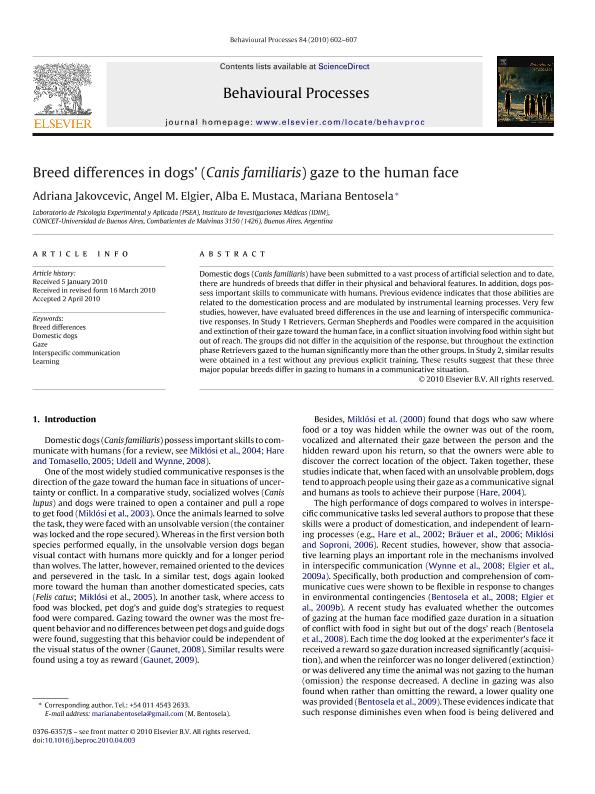Artículo
Breed differences in dogs’ (Canis familiaris) gaze to the human face
Fecha de publicación:
06/2010
Editorial:
Elsevier Science
Revista:
Behavioural Processes
ISSN:
0376-6357
Idioma:
Inglés
Tipo de recurso:
Artículo publicado
Clasificación temática:
Resumen
Domestic dogs (Canis familiaris) have been submitted to a vast process of artificial selection and to date, there are hundreds of breeds that differ in their physical and behavioral features. In addition, dogs possess important skills to communicate with humans. Previous evidence indicates that those abilities are related to the domestication process and are modulated by instrumental learning processes. Very few studies, however, have evaluated breed differences in the use and learning of interspecific communicative responses. In Study 1 Retrievers, German Shepherds and Poodles were compared in the acquisition and extinction of their gaze toward the human face, in a conflict situation involving food within sight but out of reach. The groups did not differ in the acquisition of the response, but throughout the extinction phase Retrievers gazed to the human significantly more than the other groups. In Study 2, similar results were obtained in a test without any previous explicit training. These results suggest that these three major popular breeds differ in gazing to humans in a communicative situation.
Palabras clave:
Breed Differences
,
Domestic Dogs
,
Gaze
,
Interspecific Communication
,
Learning
Archivos asociados
Licencia
Identificadores
Colecciones
Articulos(IDIM)
Articulos de INST.DE INVEST.MEDICAS
Articulos de INST.DE INVEST.MEDICAS
Citación
Jakovcevic, Adriana; Elgier, Angel Manuel; Mustaca, Alba Elisabeth; Bentosela, Mariana; Breed differences in dogs’ (Canis familiaris) gaze to the human face; Elsevier Science; Behavioural Processes; 84; 2; 6-2010; 602-607
Compartir
Altmétricas




